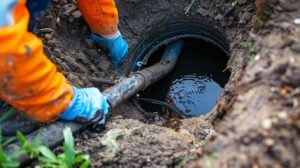Modern roofing installation is evolving rapidly with smarter and more resilient systems. With climate concerns rising, builders now focus on using materials that respond better to unpredictable weather. It’s not just about covering a structure anymore; it’s about long-term security. Homeowners and builders alike demand roofing that adapts, lasts, and performs under pressure.

Today’s roofing is no longer dependent on traditional layouts or basic layering methods. Advanced sealing membranes are taking over, creating barriers that prevent even microscopic leaks. These materials often adjust to temperature shifts, expanding or contracting as needed. That flexibility keeps the structure airtight across seasons. Click Here to learn more.
Roofing installers are also using drones to scan and map roof dimensions. This ensures perfect fit and reduces waste. It also speeds up the process, minimizing human error. With thermal imaging, they can detect weak spots before they become visible problems.
One newer trend involves modular roofing panels that snap together without nails. This innovation reduces installation time and enhances safety. Fewer fasteners also mean fewer potential points of failure. These systems are particularly helpful for steep or awkward roof slopes.
Smart roofing now includes embedded sensors that monitor temperature and water exposure. These tiny devices can alert homeowners to mold risks or insulation breakdowns. Data from these sensors can also help schedule timely maintenance. Early alerts prevent costly repairs and improve roof lifespan.
Solar-reflective roofing materials are another upgrade gaining attention. These surfaces push heat away instead of absorbing it. This reduces cooling costs and eases strain on air conditioning units. In warmer zones, that’s a game-changer.
Roofing design is also influenced by environmental impact more than ever. Installers often use recyclable underlayment made from post-consumer waste. Some materials are biodegradable within specific time frames. These reduce landfill contributions while maintaining durability.
Another innovation involves self-healing asphalt shingles. When minor cracks appear, embedded polymers activate under sunlight. They seal the damage and restore protection. These technologies are a leap forward in preventive maintenance.
Modern adhesives also replace mechanical fasteners in many roofing systems. These bonding agents distribute weight more evenly. They resist shifting during storms or earthquakes. With better stress management, roofs become more durable over time.
Thermal regulation is becoming a core part of roofing design. New insulation panels are layered into roofing decks directly. This eliminates energy leaks at the structural level. It’s a hidden feature with high impact on monthly bills.
Even the shape of roofs is being rethought to support airflow. Sloped panels now incorporate aerodynamic ridges. These help regulate wind pressure and protect against uplift. Roofs built with airflow in mind last longer and require fewer repairs.
There is a growing trend of green roofing installations even in residential settings. These roofs are layered with soil and vegetation over waterproof barriers. The design cools homes naturally and filters air pollutants. They also reduce noise from outside environments.
Cool roofing paints are being developed with nano-coating technology. These coatings scatter heat-producing rays away from the surface. Some even shift color slightly to reflect more light during hotter days. This reactive approach adds new value to paint beyond aesthetics.
Structural integration of rainwater systems into roofs is rising. Channels are built into the design to collect and redirect rain efficiently. These systems reduce strain on gutters and manage water sustainably. Some can store water for reuse in non-drinking applications.
Prefabricated roof panels are cutting down on site work dramatically. These panels are made in controlled environments and installed with fewer adjustments. That ensures consistency and reduces time on dangerous rooftop tasks. It’s a safety upgrade with performance benefits.
Digital modeling software is reshaping the planning phase. Roofs are simulated in 3D before materials are cut or ordered. This allows for correction of issues before actual construction begins. Less waste and smoother workflow are direct outcomes.
Modern vent systems have become more discreet and efficient. Low-profile vents now fit into ridge lines without disturbing design flow. These innovations ensure airflow without compromising appearance. They help prevent attic heat buildup or moisture-related issues.
Reflective tiles are another addition making waves in new builds. These tiles remain cooler under sunlight than traditional ones. When combined with insulation layers, they create a double-protection barrier. Homes stay cooler with less energy use.
Acoustic dampening is gaining traction in roofing installation. Special layers are placed to absorb sound from rain or outside traffic. This approach turns the roof into a noise buffer. It’s especially useful in high-density areas or near busy roads.
The rise of passive roofing systems is creating opportunities for savings. These designs regulate temperature and moisture without active controls. They use layers of thermally responsive materials. It’s a low-energy solution for long-term comfort.
Robotic roofing systems are slowly entering the industry. These machines can lay tiles or insulation panels with precision. They reduce worker fatigue and speed up the timeline. It’s a futuristic addition, but one with promising benefits.
Specialty flashing materials are now more resistant to temperature and corrosion. Modern flashing adapts to shifting roofing materials without cracking. It guards seams from becoming leak entry points. This minor detail adds major value to roof performance.
Fire-resistant coatings are now baked into many roofing panels. These add protection without changing the roof’s structure. Homes in high-risk zones benefit from this unseen layer. It’s a blend of safety and innovation.
Living roofs are now designed to clean and recycle gray water. These systems integrate plumbing and plant life together. Water passes through filtration layers and nourishes rooftop gardens. It’s a sustainable loop built into the architecture.
Weight distribution is key in today’s roofing structures. Load-balancing frameworks are being used beneath panels. This protects the building from structural fatigue. Roofs become both protective and weight-efficient.
Anti-fungal and anti-algae treatments are embedded into materials. These guard against staining and roof deterioration. They require less maintenance over time. It’s a chemical-free way to maintain clean rooftops.
Invisible solar films are emerging as the next solar evolution. These films lie flat over roof materials and are barely visible. They convert sunlight into energy without changing appearance. It’s ideal for those who want function without flashy panels.
Reinforced composite shingles offer flexibility and strength in one. They handle impact better than older materials. Their lightweight design also reduces roof load. This makes them perfect for regions with harsh weather conditions.
Roof edge technology now prevents ice dam formation in colder climates. These smart edges detect freezing temperatures. They warm just enough to keep water flowing. This prevents structural damage from trapped meltwater.
Multifunction roof surfaces are the latest architectural trend. These roofs serve as patios, gardens, or solar farms. They combine beauty and purpose in one layer. It’s a shift from passive protection to active lifestyle integration.
Smart coatings now change color based on weather conditions. Dark in cold seasons, light in hot ones. These materials reduce thermal fluctuation within the home. That saves energy and improves indoor comfort.
AI-driven roofing diagnostics are coming into play during inspections. Using predictive models, software can assess future damage likelihood. This proactive insight supports budgeting and repair scheduling. It transforms maintenance into a science.
Dynamic panel spacing systems allow for rooftop flexibility. As materials expand or shrink, spacing systems shift slightly. This prevents warping or cracking. It’s a small adjustment with big structural implications.
Contractor-free installations are gaining traction in remote areas. Pre-cut kits with step-by-step digital guides allow DIY solutions. These systems include all necessary components for safe assembly. It’s a breakthrough in accessibility and affordability.
Moisture-mitigating insulation layers are making roofs more breathable. These let vapor escape without allowing water in. It prevents mold and rot beneath the surface. Healthy airflow translates to a longer roof life.
Electric heat grid layers are now embedded in some modern roofing. These are activated during snow or frost accumulation. They melt ice without damaging roofing material. It’s safer and more efficient than chemical solutions.
Recyclable roof tear-off sheets are easing the demolition process. These layers peel off cleanly during replacements. They reduce labor costs and material waste. It’s a thoughtful end-of-life roofing solution.
Machine-learning software now predicts optimal installation timing. It considers weather, humidity, and material conditions. Installers follow schedules based on real-time forecasts. That results in fewer delays and better long-term performance.
Hybrid roofing structures are combining the best of metal, tile, and synthetic options. These custom assemblies maximize strengths while covering weaknesses. Designers tailor each roof based on specific climate or usage. It’s a personalized performance upgrade.
As roofing installation continues to embrace change, innovation remains the core driver. Each new material, design, or tool adds to the resilience of structures. In the future, roofs won’t just protect—they’ll interact, adapt, and even heal. And that’s the kind of future that builds smarter homes from the top down.
